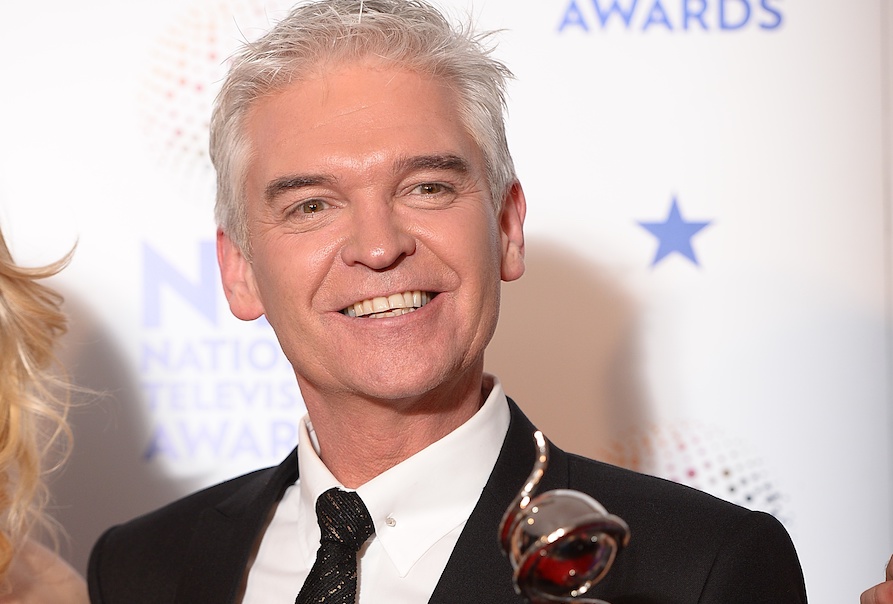Phillip Schofield has been doing Pilates for the past 6 years – here’s why it’s good for older men
With a self-proclaimed “core of steel”, Phillip Schofield is proof that you can be in the best shape of your life in your fifties.
Silver-haired Schofe has a better bod than scores of the celebs he grills on the This Morning sofa, despite often having decades on them.
View this post on Instagram
So how exactly does he do it? The TV host, 56, has notably trimmed down over the last five years and has now revealed the secret to his incredible physique over Instagram.
In a tell-all post, he spoke out about his love for Pilates, while unveiling his trainer, Jo Tuffrey. “You may or may not know that I do Pilates every week with Jo Tuffrey here,” he told his 2.3 million Instagram followers.
“I’ve been doing it for about six years, which is why I have a core of steel,” he quipped.
View this post on InstagramMy Pilates instructor @jotuffreypilates goes public jotuffrey.com #coreofsteel
We all know that it gets harder to work off the beer belly with each passing year, but Schofield proves that when it comes to fitness, there’s no excuse for skipping out on the hard work.
If you don’t fancy slogging it out on a spin bike to hardcore techno music with a bunch of 20-year-olds (and we don’t blame you), Pilates is a great low-impact, toning system for shaving off the pounds in a gentle way.
As well as sporting a thicker waistline over time, older men in the UK commonly suffer from poor posture, a compressed spine and decreased vitality. Pilates, the experts say, can be a helpful way of tackling these issues.
Pilates teacher Mary Huckle explains: “As we get older, our posture generally deteriorates. The spine becomes compressed and is be mainly due to low or non-activity and being seated incorrectly for long periods.
UK guidelines suggest that adults aged 65 or older who are generally fit and have no health conditions that limit their mobility should try to achieve at least 150 minutes of moderate aerobic activity such as cycling or walking every week. A British Heart Foundation study found that just 58% of men aged 56-74 were meeting the recommendation, though.
“Some older men don’t do any exercise, and can sometimes have little understanding of how their bodies work, let alone how to hold themselves properly,” comments Huckle.
View this post on Instagram
“Pilates addresses imbalances and misalignment, it lengthens the spine, revitalises, re-energises, improves stamina and posture. These are just a few of the benefits which older men can reap.”
Weight-bearing exercises, such as those carried out in Pilates, are often recommended as part of bone-building programs to prevent osteoporosis too.
Last year a study published in the International Journal of Sports, Exercise and Training Science found that men who took part in a one-hour Pilates class, three times a week, for ten weeks, saw a significant improvement in their step-up and leg-press performance, thanks to the extra strength gained.
So how often do you need to do it to feel the benefits?
“I would recommend at least one 60 minute session per week,” says Huckle. “The ideal would be two weekly sessions.”
“Find a recommended Pilates teacher and if you can afford it, have at least one private session.
“One on one tuition to help the teacher understand your posture is recommended. Learning the basics in a one on one setting is also much easier for both the teacher and client.
“Once you gave enough confidence and has grasped the basics, then group classes will be fine, going forward.”
Before beginning a Pilates class, it’s important that students – particularly over 50 – should speak to their GP. Many physical ailments can be accommodated during a class, but it is important to know if there’s any risks to be aware of.
If your GP is happy for you to try it out, it’s important to let your Pilates teacher know of any aches, pains or injuries before the class, so they can offer suitable adjustments.
The Press Association
Latest posts by The Press Association (see all)
- Could brisk walking boost your heart? - April 16, 2025
- Best spring-to-summer plants to fill the colour gaps - April 15, 2025
- Catherine tells how ‘spiritual’ connection with nature gives her peace in busy world - April 15, 2025
- Why weeds are worth cultivating – and eating - April 14, 2025
- 5 top tips for cleaning your tech, from phones to laptops - April 14, 2025




















